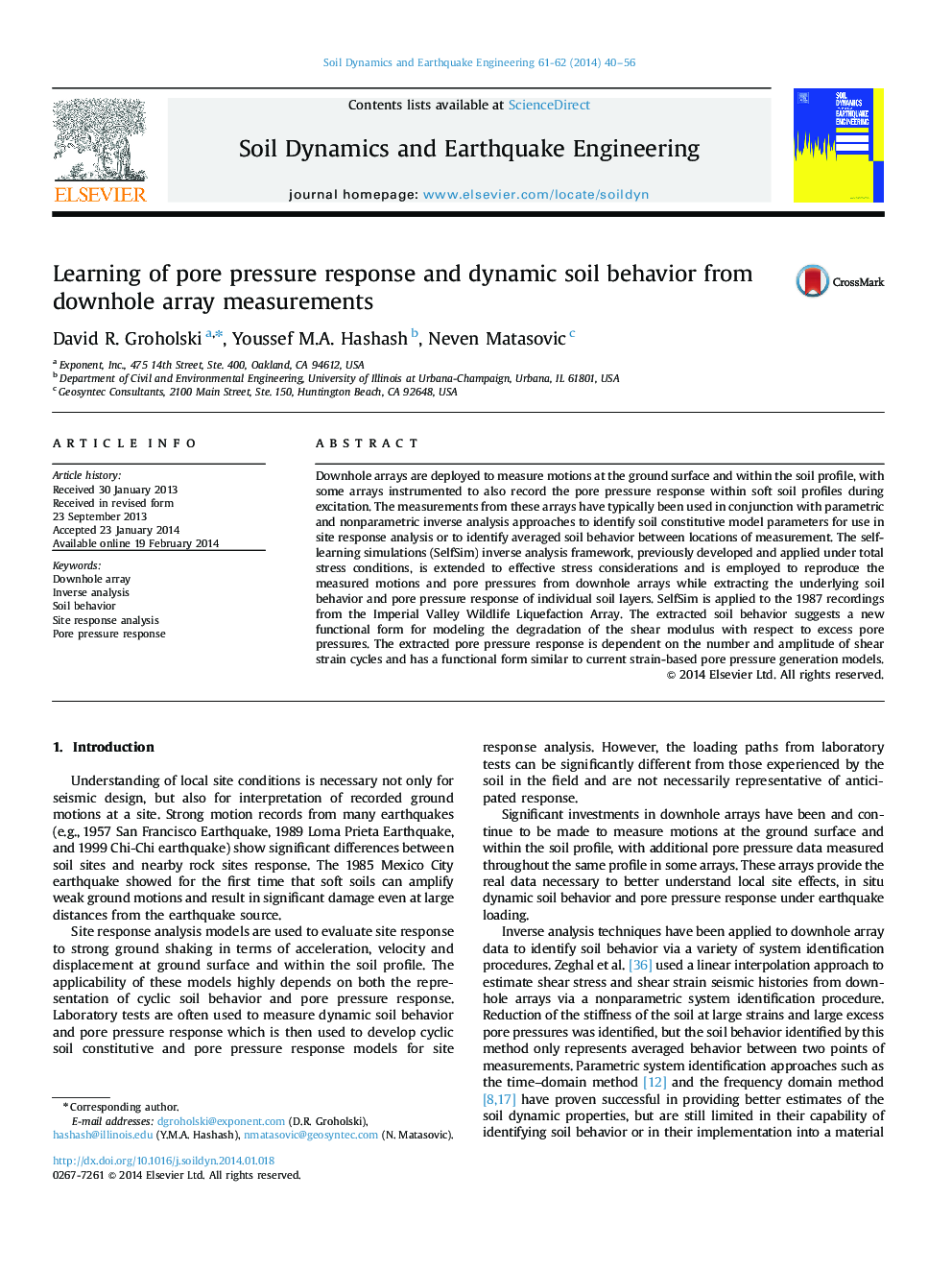| Article ID | Journal | Published Year | Pages | File Type |
|---|---|---|---|---|
| 304188 | Soil Dynamics and Earthquake Engineering | 2014 | 17 Pages |
•SelfSim inverse analysis framework integrates field measurements with numerical modeling.•Soil behavior and pore pressure response extracted from downhole array measurements.•Extracted behavior can be used to interpret soil behavior and pore pressure response.•Extracted behavior shows modulus reduction and damping increase with shear strain.•Extracted behavior shows modulus degradation with increasing excess pore pressures.
Downhole arrays are deployed to measure motions at the ground surface and within the soil profile, with some arrays instrumented to also record the pore pressure response within soft soil profiles during excitation. The measurements from these arrays have typically been used in conjunction with parametric and nonparametric inverse analysis approaches to identify soil constitutive model parameters for use in site response analysis or to identify averaged soil behavior between locations of measurement. The self-learning simulations (SelfSim) inverse analysis framework, previously developed and applied under total stress conditions, is extended to effective stress considerations and is employed to reproduce the measured motions and pore pressures from downhole arrays while extracting the underlying soil behavior and pore pressure response of individual soil layers. SelfSim is applied to the 1987 recordings from the Imperial Valley Wildlife Liquefaction Array. The extracted soil behavior suggests a new functional form for modeling the degradation of the shear modulus with respect to excess pore pressures. The extracted pore pressure response is dependent on the number and amplitude of shear strain cycles and has a functional form similar to current strain-based pore pressure generation models.
